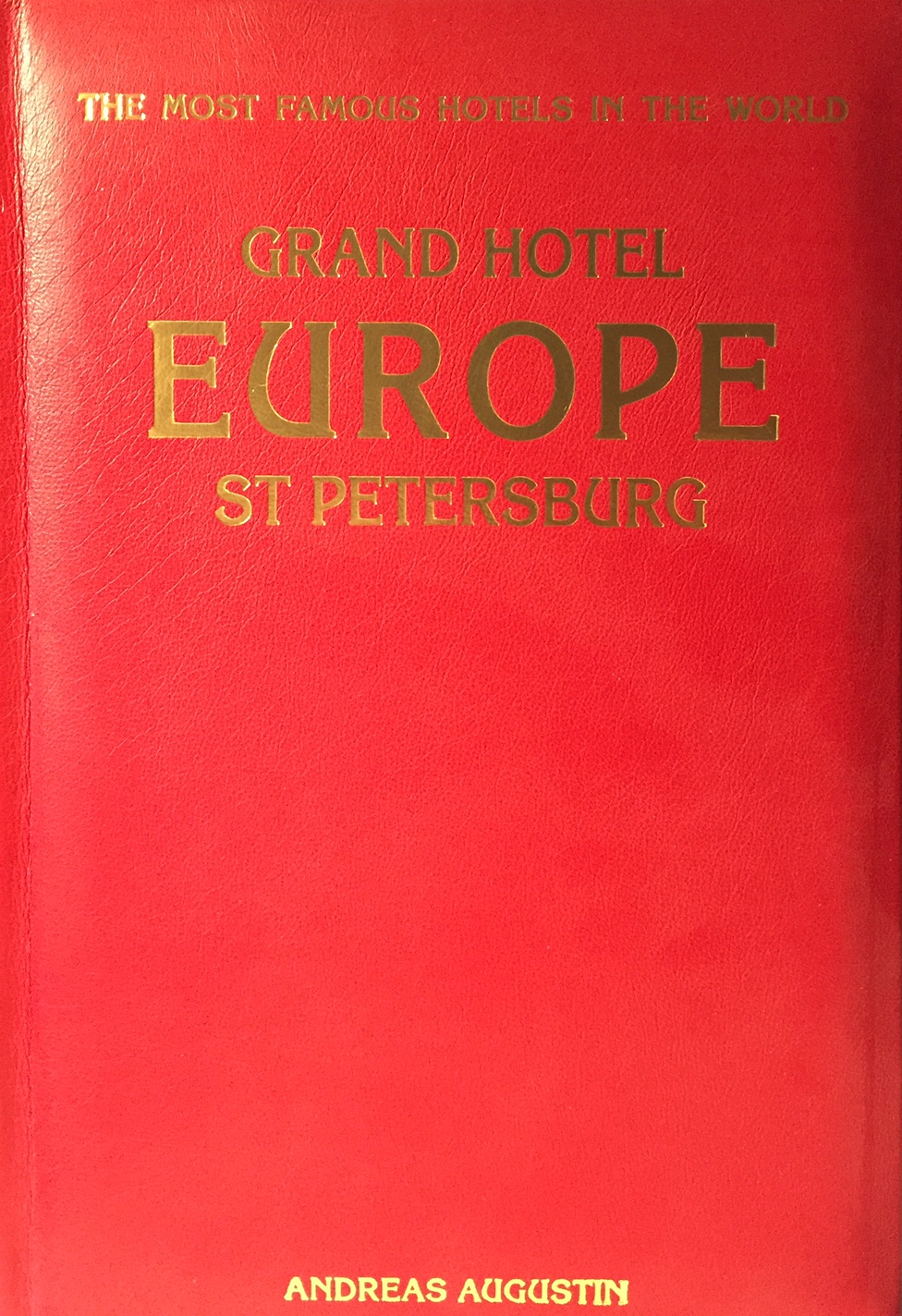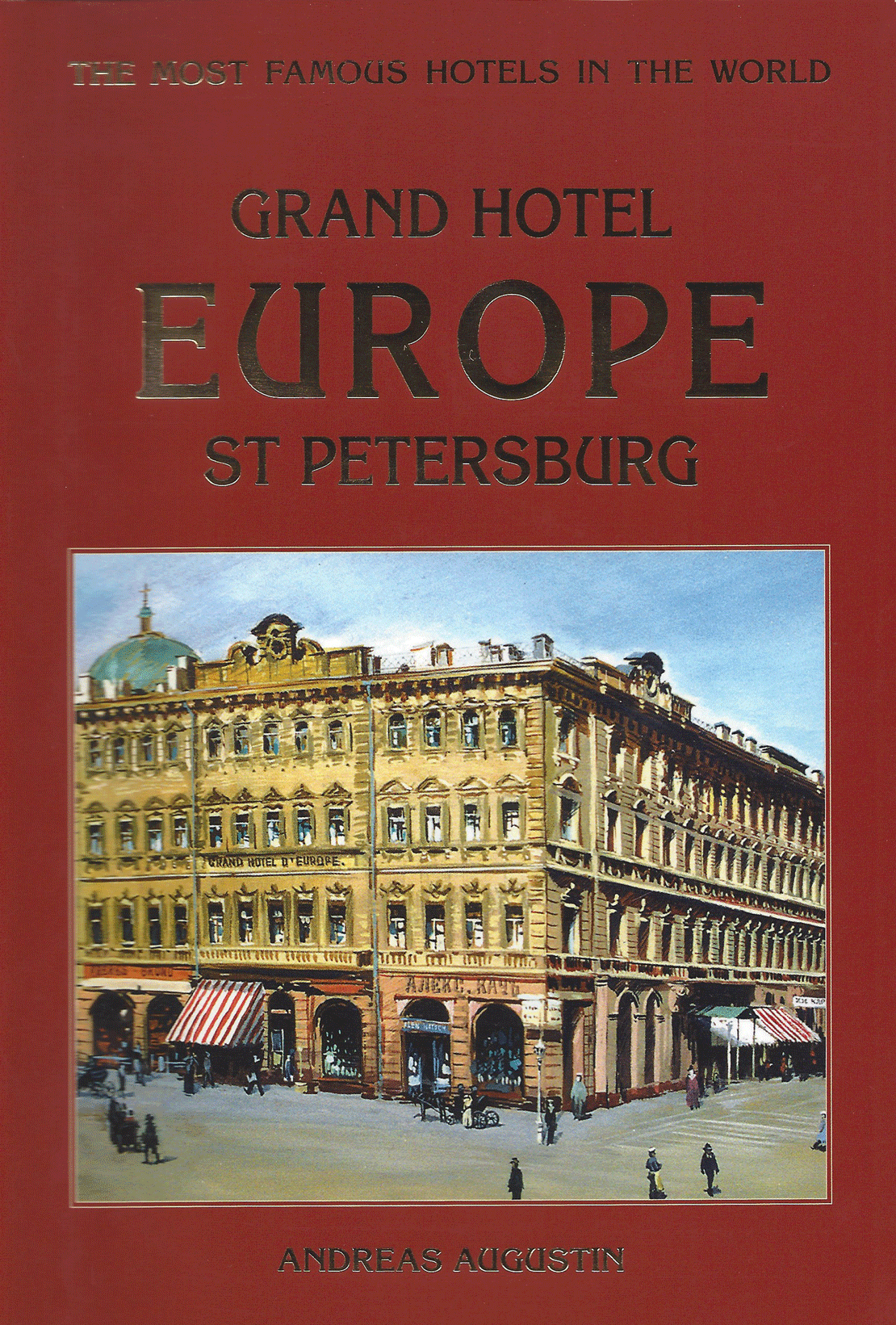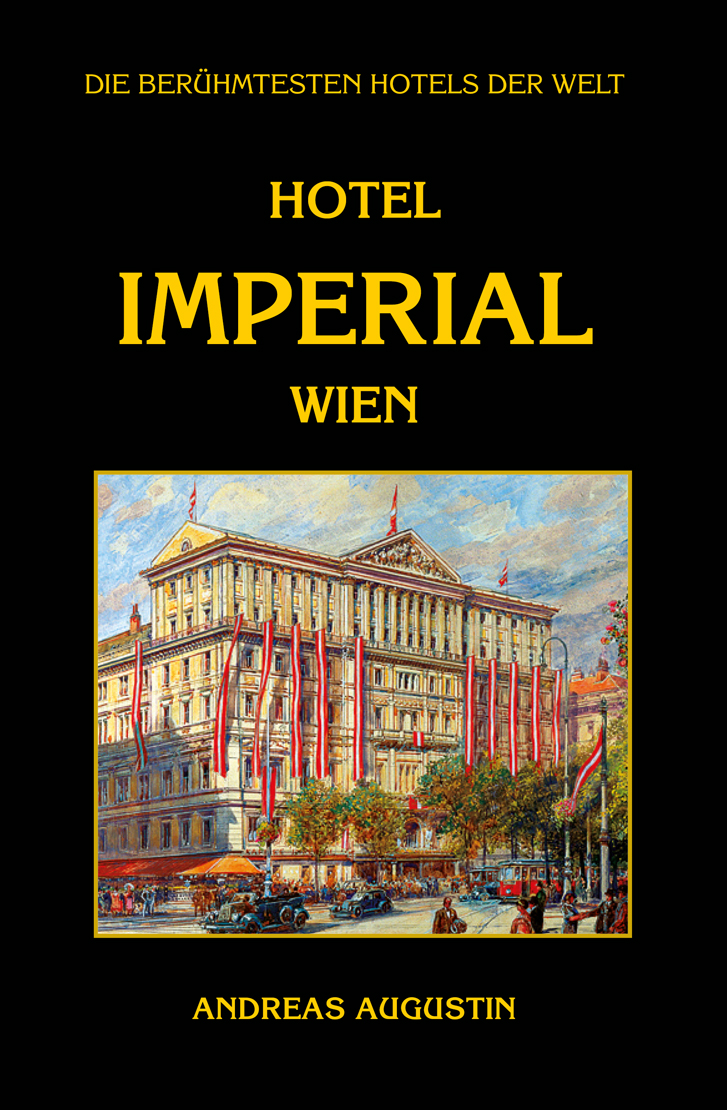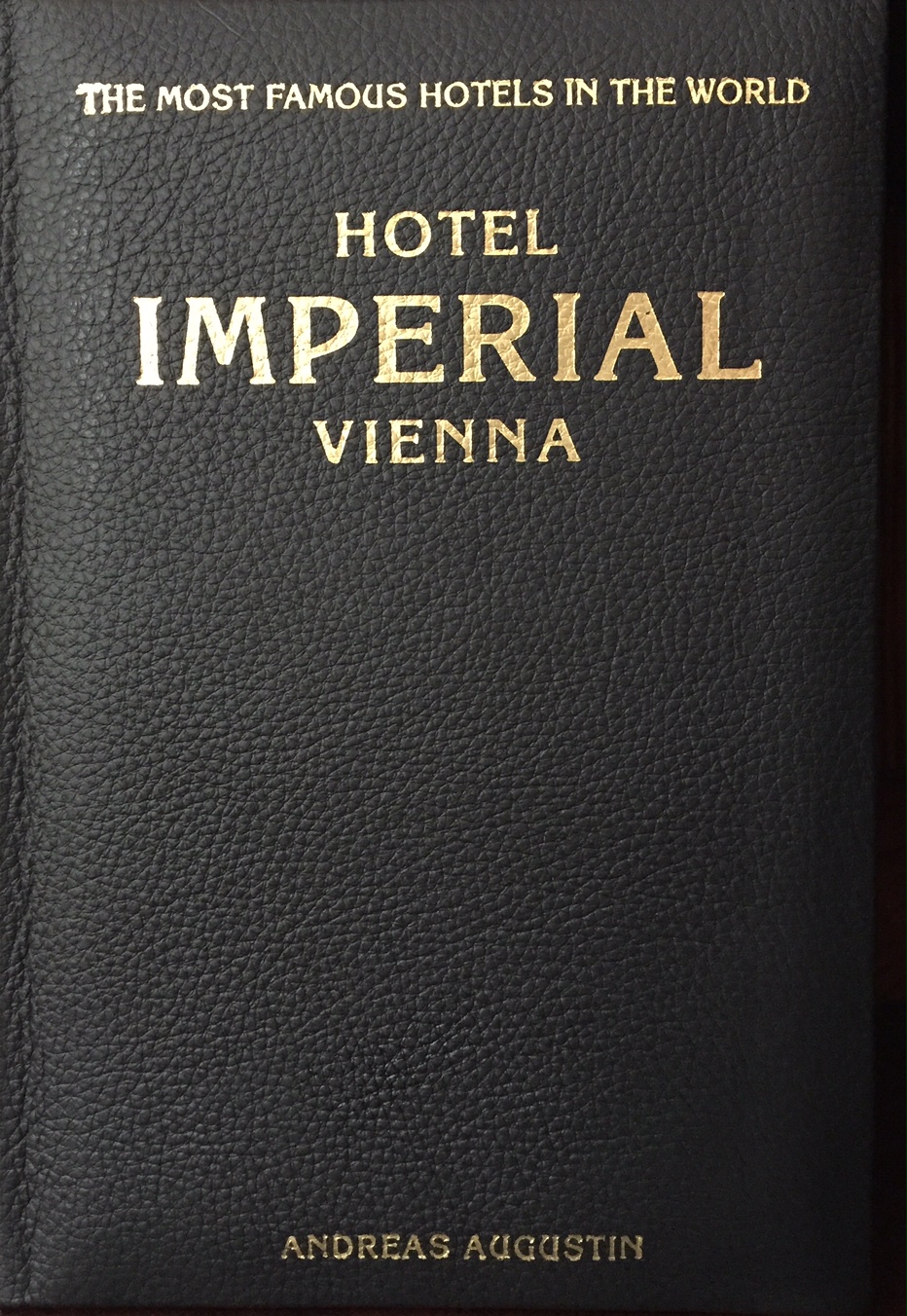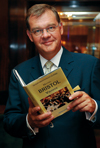Hotel Kämp – Helsinki, Finland (English)
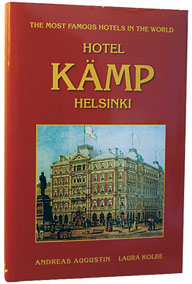
Author
Andreas Augustin & Laura Kolbe
Pages
152
Photographs
Illustrations
180 historic and contemporary photographs and illustrations
Leather-bound edition
No
Binding
Hardcover (real cloth bound / gold stamping / dust jacket)
ISBN
3-900-692-03-3
Size/Weight
160 x 235 mm, 720 g
Also available in
Finnish
Related Hotel
Welcome to the Daughter of the Baltic Sea, as Helsinki is nicknamed. And a very warm welcome to Hotel Kämp, Finland's luxurious legacy of hospitality.
For over 100 years the Kämp rules one of the most beautiful corners of the lovely Esplanade, that used to dived the city in a Southern and a Northern hemisphere. It was the haunt of every discerning traveller who visited Finland. Its historical roots lay in the days when the Russian tsar ruled Finland as a Grand Duchy. The Kämp was instrumental as a meeting place for a group called Young Finns, a revolutionary circle that changed the social surface of the country. Here at Hotel Kämp conspiratorial meetings were held and many cornerstones of this young republic called Finland, founded in1917, were laid.
Meet the great names of a bygone era, from Sibelius, the genius musician, to the great artist Gallen-Kallela. Today legendary artists and international statesmen make Hotel Kämp their home away from home. From famous historic names to the great personalities of our days Hotel Kämp is their first address in Finland, and this book tells its story.
The back of the book's jacket shows a first drawing of the hotel, Jean Sibelius, Under German siege, A funny party, The legendary Kämp ducks, Elton John, and a steamer in a Fjord; Marshal Mannerheim, Tina Turner, Björnstjerne Björnson, Eino Leino, a detail from the famous Favén painting and pop group Bon Jovi.
The heavy looking man with the huge white beard turns round and bows to his audience. They know him well and greet him with warm applause. Then he turns back to the stage. 69 members of the Helsinki Philharmonic Orchestra look at approximately one thousand and six hundred people. The 11th chief conductor of the orchestra, Leif Segerstam, raises his hands, and time stands still. His palms form an invisible triangle, his head makes an unexpected turn. Suddenly Sibelius emerges from the instruments and flows through the air of the Finlandia-talo, the famous concert hall of Helsinki, designed by Alvar Aalto. His music takes my mind back to the Hotel Kämp, which I had left an hour ago.
There Sibelius had found friends, kindred spirits, a home away from home. Days and nights passed in discussion, inspiration, illumination. On the wings of his second symphony I am inventing this little tale, set in Helsinki of the year 1887.
Here it is:
For years a restaurant, called Opera Cellar, was the gathering point for students, among them a group of young musicians. One day Carl Kämp, the owner of the restaurant, announced his plans to move his premises from the much-beloved cellar to a new hotel, which he had bought. One of his young guests rose and said: ‘This posh new hotel will be much too expensive for all of us. Sad, dear Kämp, that we will not meet again.’ Kämp looked at them astonished and said softly: ‘For you, dear friends, there will always be a place under my roof.’ ‘And when I am a famous composer, I will celebrate each of my premiers at your new restaurant!’ another young man exclaimed. ‘May I take your reservation, Sir?’ Kämp replied laughingly. ‘The name is Sibelius. My friends call me Janne, dear Kämp.’
It took years until Sibelius, the greatest of all Finnish composers, returned from his studies in Berlin and Vienna. When he touched Finnish soil again he had not forgotten Carl Kämp and made his way to the restaurant at the Hotel Kämp, which he made his personal retreat for many years to come.
This is how it could have been . . .
The next morning Laura Kolbe, a Helsinki Professor for History, takes her dog and myself for a walk. We stroll up a hill overlooking the harbour. Ferry ships from Sweden arrive. Professor Kolbe looks into the sky, then down again and explains: ‘Unlike many other European capitals, Helsinki has no medieval city centre. Helsinki is a town of the sea. In the arms of the sea lies the destiny of Helsinki, safely enveloped. The town has grown out on a peninsula, out of the sea, towards the sea, the blue field of Helsinki. It meant access to Europe, connections, freedom, dreams and interaction. The sea opens up towards the south, where it meets the European continent, signifying trade, harbours and wealth, whereas the sky symbolizes the inland, its stability and homeliness. Between those two blues are the roots of the natives of Helsinki. ‘The sea creates visual effects, scents and sounds, reflecting four distinct seasons. Out of the open sea, the wind, humid and cold, blows in the life of Helsinki. In the summer, it is a nice, warm, refreshing breeze. During the cool days of autumn, the sea, with the warmth of the summer, works up a mist wrapping the town in its arms. In the winter the frozen sea – all white and bright – glimmers, attracting bait fishers, skiers and promenade lovers. When the ice melts away, or “leaves” as we say, Helsinki is finally set free, waking up invigorated, towards the light and life of the summer. The sea is present in the bevy of wild ducks and the flocks of screaming sea gulls flying over roof tops, visible in the surface of primary rocks, smooth to touch. It is heard in the reeds, rustling by the seaside streets. You can smell the sea everywhere.’
Andreas Augustin
Andreas Augustin
presents
Hotel Kämp Helsinki
in the series The Most Famous Hotels in the World™
Thanks go to Timo Tirri, the general manager, who accompanied this project over the past years as director of sales. We would also like to thank Jan K. Nielsen, the former general manager, who was the driving force behind this history project. We are in particular indebted to all former and current members of the staff, who contributed so generously to this book, especially Gunnar Ormalm.
We also like to thank Hannamari Mäkelä and Sanna Suomalainen for their splendid coordination work, Päivi Holmberg, today’s rooms division manager, who was the new Kämp’s public relations manager, Jukka Saikkonen, who introduced the hotel technically, Tiina Peltonen, who keeps its laundry clean, Timo-Pekka Karejärvi from the Brasserie, former executive chef Atte Vannasmaa, Charlotta Beaulieu (human resources department), Inka-Kristiina Hanhivaara of sales, Inka Uusitalo-Raoult, the reservations manager, Jyri Wennerkoski (quality management) and all the others who are not mentioned here by name.
Photographs: Archives of the Hotel, Famous Hotels Main Archives
Translations: Laura Kolbe, Piia Matikkala
Production: Harrison Dolittle
Editors: Daniel Szelényi, Roddy Martine and Carola Augustin
All historic data have been carefully selected during research with the objective of providing a general historical overview. This work does not therefore claim to be complete. Historic photographs have been restored as necessary, and are therefore subject to copyright. The entire work, including such parts as the dust jacket, the enclosed postcards and bookmarks, are also subject to copyright.
Any form of storage using electronic media or distribution via a network is prohibited. Any reproduction of excerpts from this work without the explicit written consent of The Most Famous Hotels in the World™ will be prosecuted.
Note for publishers and authors
All the photographs used in this book are available as high-quality digital files.
Please contact the archives of The Most Famous Hotels in the World
(archives@famoushotels.org) for illustrations for your own publications.
We will be happy to provide them for you.
© Copyright The Most Famous Hotels in the World™ 2002–2006
Design: Ramazotti Michelangelo

